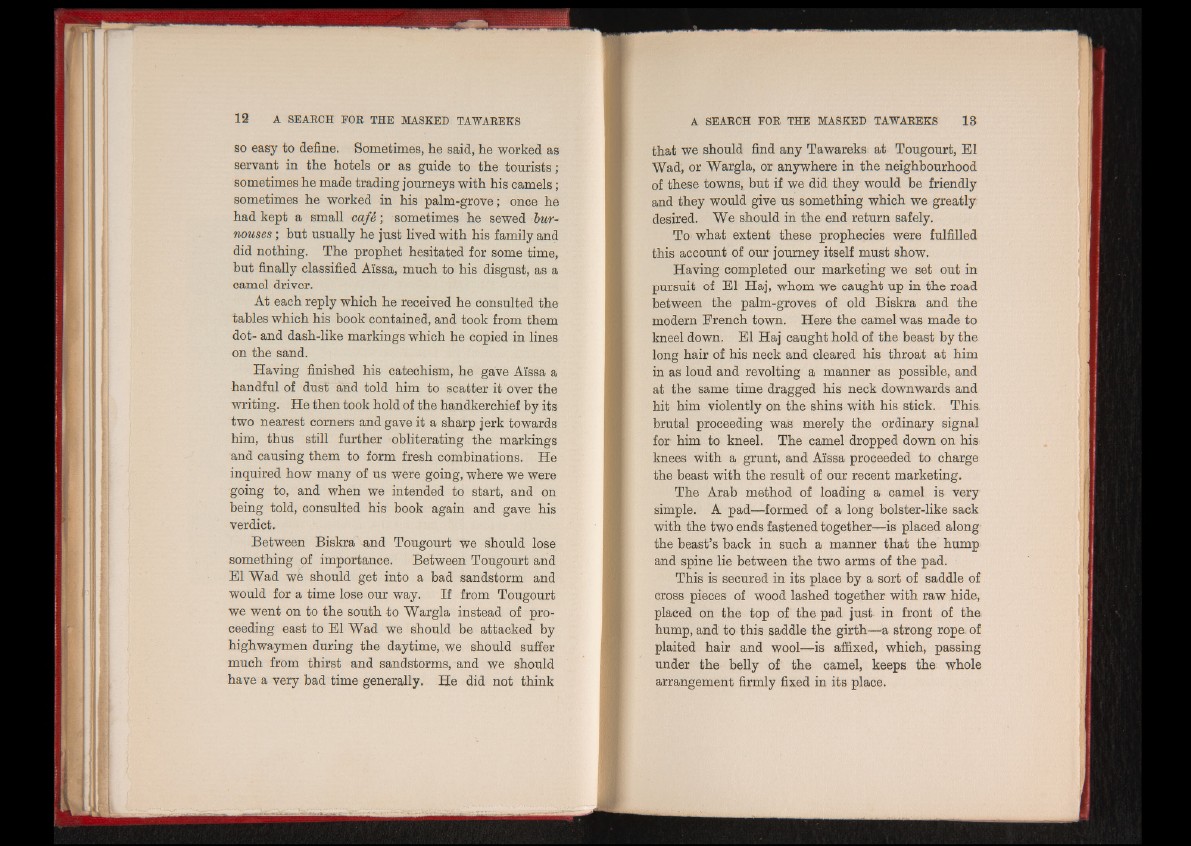
so easy to define. Sometimes, he said, he worked as
servant in the hotels or as guide to the tourists;
sometimes he made trading journeys with his camels ;
sometimes he worked in his palm-grove; once he
had kept a small café ; sometimes he sewed burnouses
; but usually he just lived with his family and
did nothing. The prophet hesitated for some time,
hut finally classified Aïssa, much to his disgust, as a
camel driver.
At each reply which he received he consulted the
tables which his book contained, and took from them
dot- and dash-like markings which he copied in lines
on the sand.
Having finished his catechism, he gave Aïssa a
handful of dust and told him to scatter it over the
writing. He then took hold of the handkerchief by its
two nearest corners and gave it a sharp jerk towards
him, thus still further obliterating the markings
and causing them to form fresh combinations. He
inquired how many of us were going, where we were
going to, and when we intended to start, and on
being told, consulted his book again and gave his
verdict.
Between Biskra and Tougourt we should lose
something of importance. Between Tougourt and
El Wad we should get into a bad sandstorm and
would for a time lose our way. If from Tougourt
we went on to the south to Wargla instead of proceeding
east to El Wad we should be attacked by
highwaymen during the daytime, we should suffer
much from thirst and sandstorms, and we should
have a very bad time generally. He did not think
that we should find any Tawareks at Tougourt, El
Wad, or Wargla, or anywhere in the neighbourhood
of these towns, but if we did they would be friendly
and they would give us something which we greatly
desired. We should in the end return safely.
To what extent these prophecies were fulfilled
this account of our journey itself must show.
Having completed our marketing we set out in
pursuit of El Haj, whom we caught up in the road
between the palm-groves of old Biskra and the
modern French town. Here the camel was made to
kneel down. El Haj caught hold of the beast by the
long hair of his neck and cleared his throat at him
in as loud and revolting a manner as possible, and
at the same time dragged his neck downwards and
hit him violently on the shins with his stick. This,
brutal proceeding was merely the ordinary signal
for him to kneel. The camel dropped down on his
knees with a grunt, and Aissa proceeded to charge
the beast with the result of our recent marketing.
The Arab method of loading a camel is very
simple. A pad—formed of a long bolster-like sack
with the two ends fastened together—is placed along
the beast’s back in such a manner that the hump
and spine lie between the two arms of the pad.
This is secured in its place by a sort of saddle of
cross pieces of wood lashed together with raw hide,
placed on the top of the pad just in front of the
hump, and to this saddle the girth—*a strong rope, of
plaited hair and wool—is affixed, which, passing
under the belly of the camel, keeps the whole
arrangement firmly fixed in its place.